#Chinese folklore & legends
Explore tagged Tumblr posts
Text
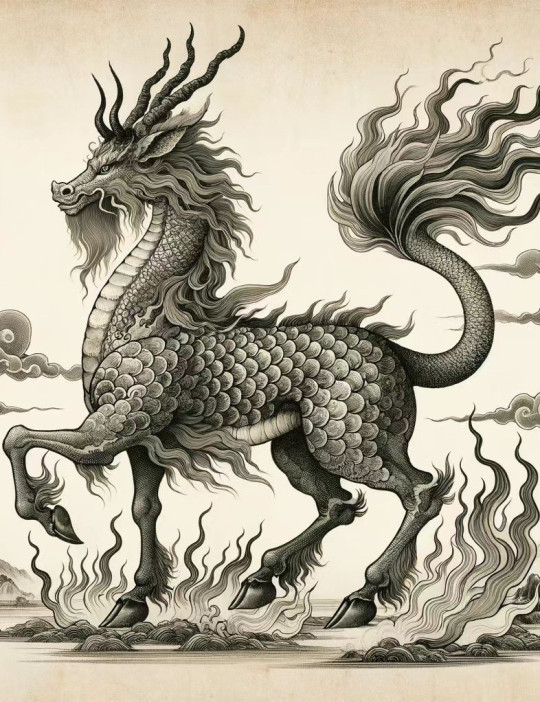
[Image above: Qilin, a legendary hoofed chimeric creature of Chinese mythology that is have been born from Yinglong]
Legends of the humanoids
Reptilian humanoids (7)
Yinglong - Winged Dragon, God of Rain in Chinese mythology
Yinglong (lit. 'responsive dragon') is a dragon that belonged directly to the Yellow Emperor (reign dates: 2697–2597 or 2698–2598 BCE), with four legs, bat- or falcon-like wings and three claws on each foot. It is allowed to access between heaven and earth. It also has the ability to store water and make it rain.
Yinglong is the chief of of the four dragons are the Azure, Red, White and Black dragons, and is said to give birth to the Heavenly Horse (Qilin), and become Yellow Dragon in old age. The Yellow Dragon is located in the middle of the Five Dragon King (Ref), is a part of Wuxing & the Four Symbols (Ref2) as the embodiment of the element of earth.
The (2nd century BCE) Huainanzi uses Yinglong in three chapters. "Forms of Earth" (Chapter 4) explains how animal evolution originated through dragons, with Yinglong as the progenitor of quadrupeds.
“All creatures, winged, hairy, scaly and mailed, find their origin in the dragon. The yu-kia (founder of birds) produced the flying dragon, the flying dragon gave birth to the phoenixes, and after them the luan-niao and all birds, in general the winged beings, were born successively. The mao-tuh ("hairy calf") produced the ying-lung the ying-lung (yinglong) gave birth to the kien-ma (heavenly horse), and afterwards the qilin and all quadrupeds, in general the hairy beings, were born successively. …”
Qilin are a type of legendary animal in Chinese mythology. They resemble deer in appearance, are large, standing 5 m ( approx. 16 ft) tall, and are unicorns with a face resembling a dragon, a bull's tail and horse's hooves, and qilin horns. Its back is five-coloured, its fur is yellow and it has scales on its body.

��説のヒューマノイドたち
ヒト型爬虫類 (7)
応龍 〜 中国神話に登場する雨の神、翼のある龍
応龍 (インロン: “反応するドラゴン“の意) は、帝王である黄帝 (在位: 紀元前2697〜2597年または2698〜2598年) に直属する龍で、4本足で蝙蝠ないし鷹のような翼、足に3本の爪を持つ。天と地の間を行き来することができる。また、水を貯めて雨を降らせる能力もある。
応龍は、四龍の長あり、天馬 (麒麟) を生み、老いて黄龍になると言われている。
黄龍とは五方龍王(参照)の中央に位置しており、尚且つ四神 (四獣) の中心的存在、四神が東西南北の守護獣なのに対し、中央を守るとされる。土の要素を体現するものとして、五行思想と四神(参照2)の一部である。
紀元前2世紀の『淮南子』は、3つの章で応龍が使われている。 “地の形” (巻四地形訓) では、動物の進化が龍を通じてどのように起こったかを説明し、四足歩行の始祖は応龍であるとしている。
“翼のあるもの、毛のあるもの、鱗のあるもの、甲殻のあるもの、すべての生き物は龍に起源を持つ。羽嘉(うか: 鳥類の始祖) は飛竜を生み、飛竜は鳳凰を生み、その後に鸞鳥とすべての鳥類、一般的には翼を持つ生き物が次々と生まれた。毛犢 (もうとく: 獣類の始祖)は応龍を生み、応龍は天馬を生み、その後、麒麟とすべての四足動物、一般的には毛の生えた生き物が次々と生まれた。...“
麒麟とは、中国神話に現れる伝説上の動物の一種である。形は鹿に似て大きく背丈は5m あり、顔は龍に似て、牛の尾と馬の蹄をもち、麒角の一角生獣。背毛は五色に彩られ、毛は黄色く、身体には鱗がある。
#yinglong#yellow dragon#chinese mythology#qilin#yin yang#legendary creatures#hybrids#hybrid beasts#cryptids#therianthropy#legend#mythology#folklore#s.f.#nature#art
149 notes
·
View notes
Text
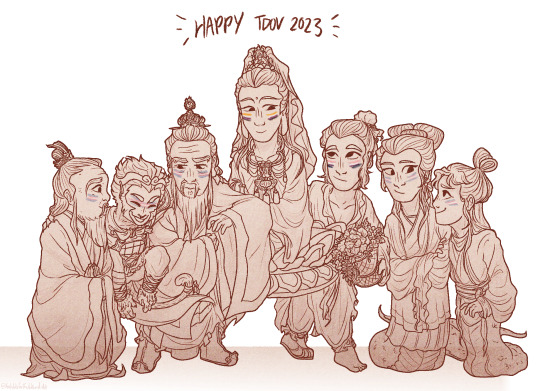
A little late but happy Trans Day of Visibility!!!
[ID: A monochrome chibi drawing of various figures from Chinese folklore with pride flags painted onto their faces. From left to right are Taibai Jinxing, Sun Wukong, Taishang Laojun, Guanshiyin Pusa, Lan Caihe, Bai Suzhen, and Qing She. Guanyin has nonbinary flags and Lan Caihe has genderfluid flags, but everyone else has trans flags. Above them is written "Happy TDOV 2023!" End ID]
#my art#tdov#tdov23#chinese mythology#journey to the west#jttw#xiyouji#sun wukong#monkey king#legend of the white snake#bai suzhen#qing she#xiao qing#wanna make it very clear that i am referring to folkloric deity taishang laojun not historical figure laozi. bc thatd be insane gfhdjkfdh#anyways no nezha this year bc i decided to go with only historic and/or reasonably textually supported characters ^-^#will add details in a reblog
476 notes
·
View notes
Text
I am presently preparing for final exams and wrapping up my final case studies for this semester, but I would like to share an opera that features Nezha outside of the widely known Havoc in Heaven where he is in combat with Sun Wukong. Today, we are going to discuss the opera Chentangguan (陳塘關), known also as The Birth of Nezha (哪吒出世) and Nezha Fights the Sea (哪吒鬧海).

The plot of this opera closely follows the origin story of Nezha as is featured within Canonization of the Gods. A defined year for when this opera was initially performed is unclear, though it was written by Xiao Rongchun and appeared within a registry of operas that featured a 'celebratory ascension' in 1824; an online record of this appears here from the Opera Culture Network.
Outside of Peking Opera, Qin Opera, Hui Opera, and Szechuan Opera also regard the performance as Nezha Fights the Sea whereas Hengqi Opera regards it as Golden Pagoda. The opera is present within Gui Opera, Hunan Opera, Chenhe Opera, and Handiao Erhuang (A form of folk opera exclusive to Shaanxi Province originating in 1807) though it is not as prominent.
This opera alongside it's contemporary art forms also focused heavily on the martial arts aspect of Chinese Opera in regards to Nezha and the varying methods his story was retold. Within this post is a brief taste of how this opera was performed, Nezha himself being played by Xu Yingying in this recording.
The full hour long performance can be found here, though it is not nearly as cinematic and was recorded from a considerable distance.
#nezha#li nezha#lmk nezha#monkie kid nezha#nezha 2019#the legend of nezha#third lotus prince#nezha lego monkie kid#nezha reborn#chinese opera#beijing opera#peking opera#chinese mythology#chinese folklore#chinese performing arts
132 notes
·
View notes
Text

An aquatic beast, known for its tendency to devour human beings.
#BriefBestiary#bestiary#digital art#fantasy#folklore#legend#myth#mythology#classic of mountains and seas#river monster#beast#monster#chinese folklore#chinese legend#gu diao
17 notes
·
View notes
Text
For today's mythology sh*tposting, I'd like to give some inspiration to the fanfic writers out there by giving you an antagonist that has a beef with a certain monkey.
Way back when, there was a goddess called the Old Mother of the Waters/Shui-mu Niang-niang who was notorious for causing floods. The other gods kept trying to catch her, but she always slithered out and kept being a problem. What was heaven to do?
Call their OTHER recurring problem and have HIM deal with her! So good old Sun Wukong went down to deal with the Old Mother, but even though catching up to her was no problem (this is Sun Wukong we're talking about) he couldn’t stop her from slipping away again. Naturally this got him very frustrated, so he went to HIS go to solution:
Guanyin!
So he motors over to her palace in the Southern Seas and they hatch a plan.
Now, the Old Mother was getting pretty hungry. This running from the law business takes it out of you at that age, you know? So she decides to take a little break at a food stall and get something to eat.
JUST AS PLANNED!
For you see, the owner of that stall was Guanyin herself and the food the Old Mother just ate were actually really heavy iron chains that very painfully revert to their true form! Unfortunately for the Old Mother, she was already halfway done with her meal by the time this happened, so she was stuck with iron in her gut and chains coming out of her mouth (honestly I'd just be thankful they weren't coming out the other end...).
So with the flood lady all tied up Sun Wukong drags her to a well at the foot of a mountain in Hsu-i Hsien and locked her up tight, where I'm sure she'll NEVER cause anyone problems EVER AGAIN. There's no way this ancient and powerful goddess of primordial oceans is sitting there, steaming while she waits for escape and dreams of monkey leather boots. Nope, she'll stay there forever, just like the Demon Bull King!
..... oh. OH NO.
Sh*tpost Masterlist
#lego monkie kid#lmk#sun wukong#journey to the west#chinese mythology#chinese myths and legends#old mother of the waters#jttw inspo character ideas#chinese myth character inspo#fanfic ideas#possible future villain#lmk guanyin#guanyin#mythology sh*tposting#the monkey king netflix#monkey king hero is back#monkey king reborn#mythology#mythology and folklore
59 notes
·
View notes
Text
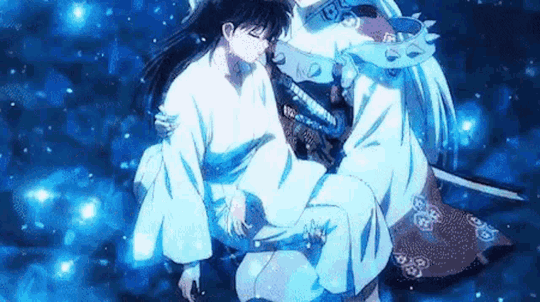
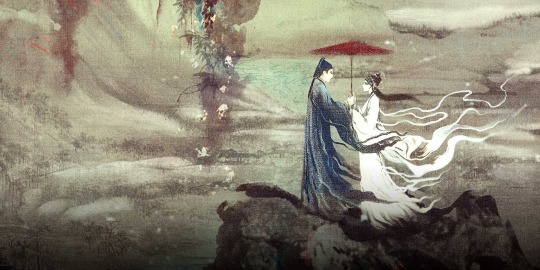
Been thinking of Sesshomaru & Rin as the legend of Lady White Snake & Xu Xian
#they’re very similar#and I love both stories#lady white snake#bai suzhen#lady bai#legend of the white snake#sessrin#sesshomaru#sesshoumaru x rin#rin#sesshoumaru#chinese mythology#chinese folklore#inuyasha
65 notes
·
View notes
Text
With the new Avatar series having been out a few months now, here's another mythology and language lesson people overlook and it's...tiring.

The word and concept of Avatar is South Asian. I can't Hinglish it, but it's close to pronounced like: Uhv-thaar. you can just google it, but it's the idea and ability of gods or powerful beings to incarnate in new time/new forms/bodies, sometimes both mortal and divine.
It happens a lot in the Vedic epics.
Avatar: The Last Airbender? Concept, reincarnation, South Asian as fuck.
South Asia (as does other areas of the world/cultures) has a take on the x number of elements as well. Usually it's: wind, fire, earth, water, and sound/voice/space or spirit - aether - w.e. you wanna call it. Spirit bending the idea of the spirit world. Obviously this set is not a direct 1:1.
A:TLA draws a closer to parallel in ways to Chinese takes on the elements.
Obviously James Cameron's avatar takes this concept to a sci fi degree, essentially bringing your mind/consciousness into a new/different (Alien) body.
We also get into the world tree mythos/axis mundi parts of his story too, but that's beside the point and not unique to any one culture - that's anything out of proto Indo-European up. Obviously within in the pantheon of sff literature and other media the idea of reincarnation and cyclic nature of time - birth across time isn't new or rare.
The idea of a Wheel of Time, in fact, comes quite from: Kalachakra - translation = "Wheel of Time." This is an Indian belief that later spread through/over distance as well as religion, popping up in Buddhism and finding prominence most notably in Tibet still to this day.
The belief also ties back into the idea of conventional reality - time being an aspect of the larger world-universe- the smaller aspects of which are comprised of, once again: earth, wind, water, fire, space - sound familiar to something rom fantasy?
Probably. If not, read more. Or...more carefully.
#a:tla#a:tla live action#a:tla netflix#a:tla rp#avatar the last airbender#avatar#Avatar is South Asian#Vedic#Vedic epics#the last airbender#chinese philosophy#elements#wheel of time#Kalachakra#buddhism#Tibet#SFF#sci-fi#fantasy#world tree#mthos#myths and legends#mythology and folklore#traditional beliefs#storytelling#writerscommunity#south asian#India#indian fantasy#gods and mortals
9 notes
·
View notes
Text
there’s a legend about a chinese painter who was asked by the emperor to paint a landscape so pristine that the emperor can enter it. he didn’t do a good job, so the emperor was preparing to assassinate him. but because it was his painting, legend goes, he stepped inside and vanished, saving himself. i always loved that little allegory as an artist. even when it is not enough for others, if it is enough for you, you can live inside it.
- ocean vuong
37 notes
·
View notes
Text
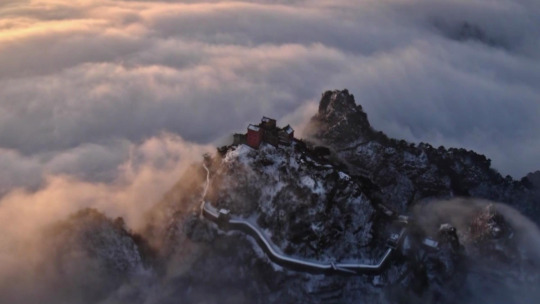
20 (intrusive) questions re: "what is your favorite memory" and "do you believe in ghosts" asked by @lyrslair & @motheroftorches
Some years ago mom was visiting me in China and requested a tour to the most "truely hardcore, authentic and impressive place" that was possible at the moment, and so we went to Udang Mountains. The place is older than infamous Shaolin, but less crowded because of the complex accessibility and harsh climate.

It's a taoist monastery complex built in the mountain forest about 1600-2000m altitude, connected with a system of ancient stairs and pathways. It's possible to rent a guest house inside the park or tea farm down near the mountain and hang around as much as you want.

So one beautiful day we got distracted with all the gorgeous views around and stuck at the top, the cable car was already shut down. We presumptuously decided to descend to the village at the foot of the mountain by ourselves...
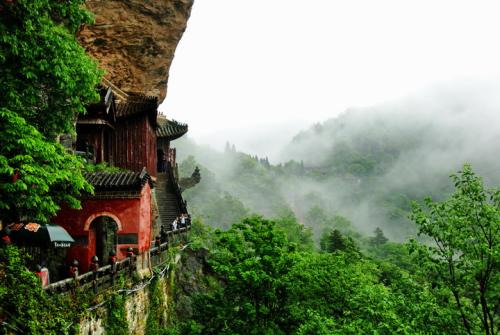
Weather in the mountains of central China can be treacherous and prone to abrupt change. Dusk came quicker than we expected, it got cold and we realized we chose the wrong stairway and got lost somewhere in the forest on our way down. It was getting BAD. Mom was scared, I was upset, and we both got extremely tired.

When we stopped to fix the gear and stick some patches on our burning feet, we heard some rustling among the trees and fluffy white dog stepped out on the path, wagging its tail. He looked surprisingly clean and well-kempt for a stray forest dog and acted extremely friendly. For the next several hours he was patiently leading the way, looking back at us from time to time, waiting for us on the road splits and steep slopes. As if he knew what he was doing very well, because eventually we saw the lights of village down at the distance.
We thanked our furry hero endlessly. He refused to eat the sausage I had in the backpack, but let us pet him. I also took some pics of him with my DSLR cam. When we quickly stopped by the little roadside store to get a him a real treat and then returned, the dog disappeared.

Noone of the locals knew who the dog belonged to, and stray dogs were actually not allowed in the park because of its natural reserve status. But next day one grandma showed me an old little shrine of local deity, Erlang. Guess who I saw there?
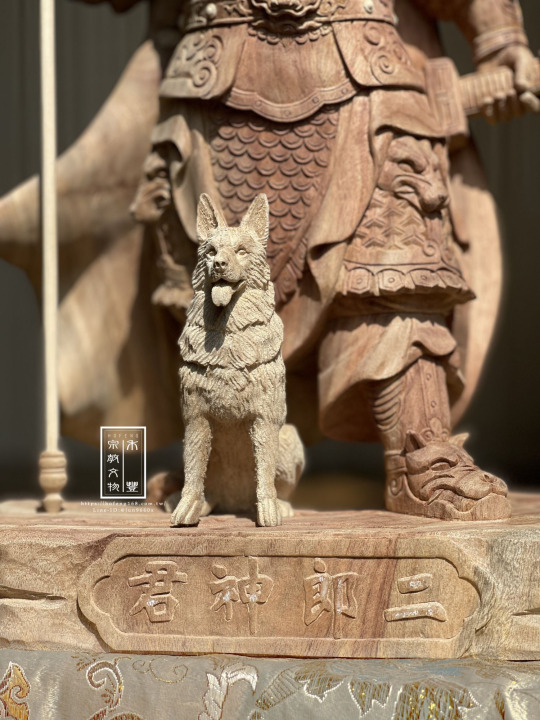
All the pictures I took of him that night turned out to be overexposed, just a blurry ball of white fur 😊 and I never had blurry pictures before that.
His name is XiaoTian, 哮天犬, Celestial Dog. You can google him, there actually a lot of funny legends.
Thanks for reading! Man, do I have a lot of stories to tell.
Ask me intrusive questions here
#ask game#dogs#cute dogs#dogs of tumblr#traveling#chinese folklore#folk culture#legends#folklore#travel photography#wudang
29 notes
·
View notes
Text
youtube
Did You Know That NINE-TAILED FOXES Are a Common MYTH Across ASIA?
Discover the fascinating world of FOX SPIRITS across Asia! From the benevolent and malevolent HULI JING in China to the trickster KITSUNE in Japan and the heart-devouring NINE-TAILED FOX of Korea, each culture has its own unique tales of these mystical creatures. Watch now to learn how these shape-shifting beings influence local legends and beliefs. Don’t miss out on this journey through the enchanting lore of Asian mythology!
#Asian culture#Asian mythology#Chinese mythology#Fox spirits#Huli Jing#Inari god#Japanese folklore#Kitsune#Korean legends#Nine Tailed Fox#Nine-tailed fox#cultural myths#mythical creatures#scp: nine-tailed fox#shape-shifting spirits#supernatural beings#trickster spirits#mythology#youtube#Youtube
2 notes
·
View notes
Text
Sun Wukong the Monkey King & the Peaches of Immortality in "Shang-Chi & the Quest for Immortality" Graphic Novel!
In the Shang-Chi & the Quest for Immortality graphic novel, a young Shang-Chi learns about the Monkey King and the Peaches of Immortality!


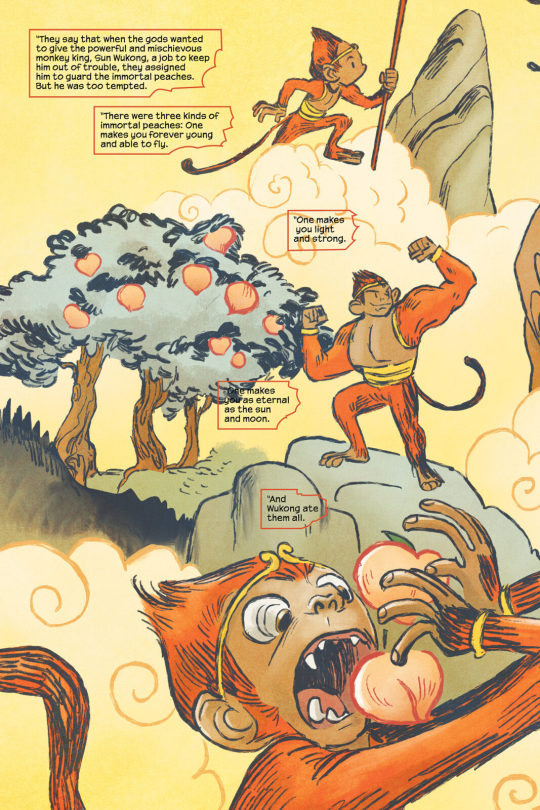

Sun Wukong the Monkey King first appeared in the Marvel Universe in Fear Itself: Monkey King #1 (2011)!

And the Peaches of Immortality, also known as P'an-t'ao, are grown in the gardens of Xi Wangmu, the Queen Mother of the West, in Ta-Lo!
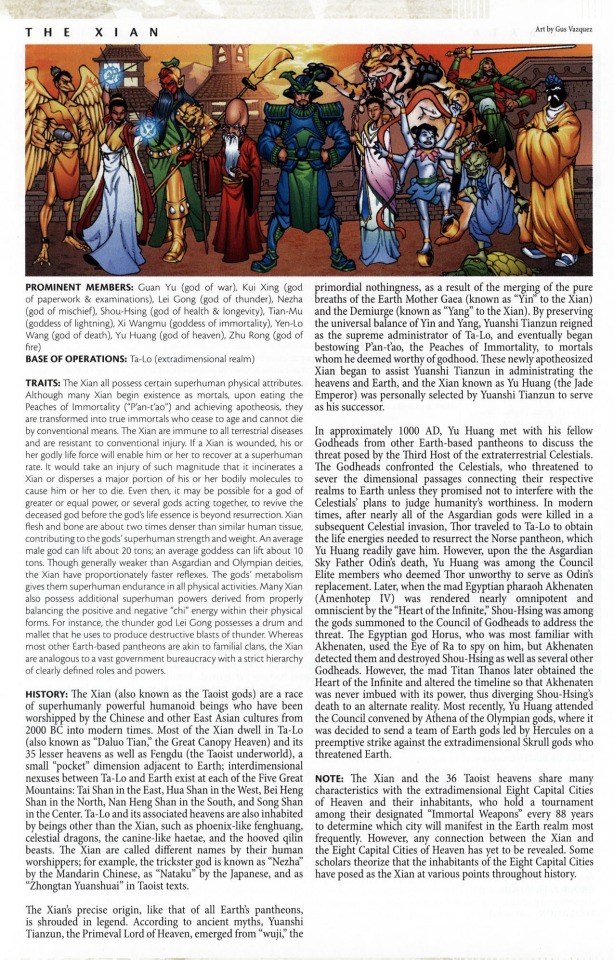
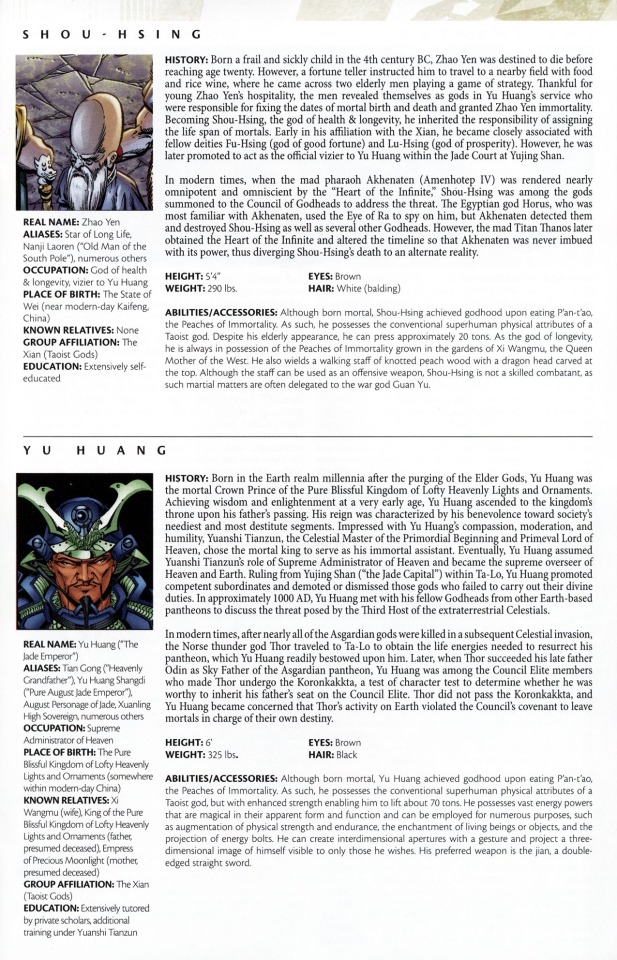
#shang chi#xu shangqi#shang chi and the ten rings#shang chi and the legend of the ten rings#shang chi legend of the ten rings#xu shang chi#chinese mythology#chinese folklore#taoism#monkey king#sun wukong#Peaches of Immortality#Queen Mother of the West#marvel#marvel comics#marvel cinematic universe#mcu#comics#Xi Wangmu#mythology#china#Ta Lo#victoria ying
19 notes
·
View notes
Text

Legends of the humanoids
Reptilian humanoids (3)
Dragon King – the god of water and dragons in Chinese mythology
Many dragons appear in Chinese folklore, of which the Dragon King is the leader. Also known as the Dragon God, the Dragon King is a prominent figure in Chinese art and religion. He is adopted by both Taoism and Buddhism and is the ruler of all water. Known as Long Wang in China, he has both human and dragon forms and can switch between dragon and human forms. Despite his intimidating and ferocious nature, Long Wan is regarded as a benevolent deity who brings good luck and chi energy to people living near the sea.
The Dragon King is a Chinese water and weather god. He is regarded as the dispenser of rain, commanding over all bodies of water. He is the collective personification of the ancient concept of the lóng in Chinese culture.
In East Asian cultures, dragons are most often shown as large, colorful snakelike creatures. While the dragons sometimes have qualities of a turtle or fish, they are most likely seen as enormous serpents.
While some named dragons are associated with specific colors, the dragon king can be shown in any shade. Like other Chinese dragons, he has a “horse-like” head, sharp horns and claws, and a hair-like beard.
Like many weather gods around the world, Long Wang was known for his fierce temper. It was said that he was so ferocious and uncontrollable that only the Jade Emperor, the supreme deity in Chinese Taoism, could command him. His human form reflects this ferocity. He is shown as a noble warrior in elaborate bright red robes. He usually has a fierce expression and poses with a sword.
During the Tang dynasty, the Dragon King was also associated with the worship of landowners and was seen as a guardian deity to protect homes and subdue tombs. Buddhist rain-making rituals were learnt in Tang dynasty China. The concept was introduced to Japan with esoteric Buddhism and was also practised as a ritual of the Yin-Yang path (Onmyōdō) in the Heian period.
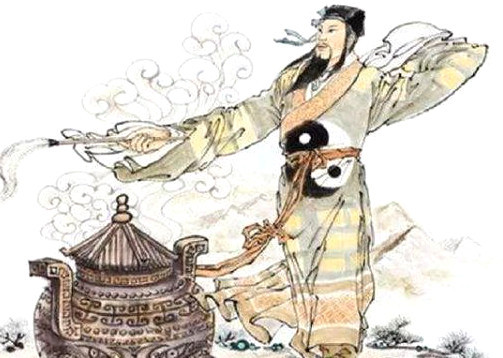
伝説のヒューマノイドたち
ヒト型爬虫類 (3)
龍王 〜 中国神話の水と龍の神
中国の民間伝承には多くのドラゴンが登場するが、龍王はそのリーダーである。龍神としても知られる龍王は、中国の芸術と宗教において著名な人物である。道教と仏教の双方に採用され、すべての水の支配者である。中国ではロンワンと呼ばれ、人間の姿と龍の姿の両方を持っており、ドラゴンと人間の姿を行き来することができる。その威圧的で獰猛な性格にもかかわらず、ロン・ワンは海の近くに住む人々に幸運と気のエネルギーをもたらす慈悲深い神とみなされている。
龍王は中国の水と天候の神である。彼は雨を降らせる神とされ、あらゆる水域を支配する。彼は中国文化における古代の「龍 (ロン)」の概念の集合的な擬人化である。
東アジアの文化では、龍は大きくてカラフルな蛇のような生き物として描かれることが多い。龍は亀や魚の性質を持つこともあるが、巨大な蛇として見られることが多い。
特定の色を連想させる龍もいるが、龍王はどのような色合いでも描かれる。他の中国の龍と同様、「馬のような」頭部を持ち、鋭い角と爪を持ち、髪の毛のようなひげを生やしている。彼の人間の姿はこの獰猛さを反映している。彼は精巧な真っ赤なローブを着た高貴な戦士として描かれている。通常、獰猛な表情を浮かべ、剣を持ってポーズをとる。
世界中の多くの気象の神々と同様、龍王は激しい気性で知られていた。あまりに獰猛で制御不能だったため、玉皇大帝にしか彼を指揮できなかったと言われている。
唐の時代、龍王はまた、大地主の崇拝と結びついて、家を守り、墓を鎮める守護神と見なされていた。仏教の雨乞いの儀式は、唐代の中国に学んだ。この概念は密教とともに日本に伝わり、平安時代には陰陽道の儀式としても行われていた。
#humanoids#legendary creatures#hybrids#hybrid beasts#cryptids#therianthropy#legend#mythology#folklore#s.f.#nature#art#dragon king#dragon god#chinese mythology#chinese dragon
138 notes
·
View notes
Note
From what I understand, your advice is that we shouldn't stick to just one version of a story or consider it the true version. And that a story has several versions. And these versions do not make one less than the other. Like, we can choose one version of the story as long as we understand that there are more versions.
Hello!
Yes this is precisely it. It’s very easy to assume that one way a story is told is the only valid version, but it also neglects how it historically was shared and retold - regardless of if deities are involved. Of course people are allowed to express favoritism, myself having moved from Wuhan, I prefer Wuhanese storytelling.
Did you know there’s roughly 360 different types of regional Chinese Opera that coexist? And with such a large variation in a specific area of performing arts, there’s bound to be more variation in nearly anything else.
Myself and the study of Nezha/Nalakubara has led me down many many different rabbit holes into how he was spread across east and southeast Asia. He appears in India, China, Taiwan, Macau, Hong Kong, Japan, Korea, Malaysia, Singapore, Thailand, Kazakhstan, Tibet, and very likely many other places I have yet to know. It would be very ignorant of me to assume the Chinese Daoist method of worship to be the only acceptable kind - and downright shameful to dismiss how other countries worship him.
It’s a lengthy answer, but I hope I was able to convey my feelings and personal thoughts properly.


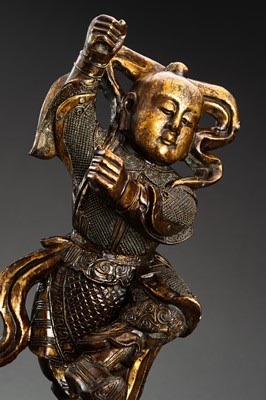
#nezha#li nezha#lmk nezha#monkie kid nezha#nezha 2019#the legend of nezha#nezha reborn#nezha lego monkie kid#third lotus prince#chinese religion#chinese mythology#chinese folklore#chinese literature#chinese opera#chinese culture#chinese dance#chinese history
67 notes
·
View notes
Text

A solitary creature. A beast who prefers to stay to himself, alone within his den.
#BriefBestiary#bestiary#digital art#fantasy#folklore#legend#myth#mythology#dragon#nine sons of the dragon#jiaotu#chinese dragon#chinese legend#chinese folklore#door decoration#doorway decoration#entryway decoration#monster#beast
16 notes
·
View notes
Text
Today's sh*tpost doesn't have anything to do with Sun Wukong or Journey to the West, but it was so funny I had to share.
So there was this guy named Si-Men Bau, who seems to have been an actual guy that lived around 500 BC, and he was made the governor of the area around the Yellow River. When he got there, he heard that these shamans/wizards/mystics were having people throw a young woman into the river every year as a "bride for the river god." The shamans actually make a pretty profitable racket by making the rich families bribe them not to pick their daughters. Si-Men, naturally, thinks this sucks, but the way he deals with it is GENIUS.
So first he gets all dressed up and says that he's TOTALLY there to honor the river god and celebrate the wedding and a lot of people show up to watch. The shamans do their thing and are ready to throw the girl into the river, but Si-Men is all like:
"Hey, I came here to celebrate the river god's marriage, but it isn't much of a celebration if the groom isn't here. Why don't one of you go get him?"
So he has some of his men take a shaman and throw them into the river to "fetch the river god," but for some reason, the god never comes. So then our guy is all:
"Wow, she must not know what she's doing. Let's try again!"
He then proceeds to have 2 MORE shaman thrown into the river, with the same results each time. Once he's ready for the third, all the remaining shaman are begging on their knees for mercy, swearing they won't ever look for a new "bride" again as long as he stops drowning them- oh, sorry, I mean "sending them to the river god."
And thus no more innocent women were sacrificed. Don't you love happy endings?
Honestly my favorite part about this myth is that it very well could have ACTUALLY happened and Si-Men actually conned some conmen out of human sacrifice.
Sh*tpost Masterlist
#chinese mythology#i love this man#someone give him a medal#mythology sh*tposting#yellow river#river god#human sacrifice#chinese myth character inspo#chinese myths and legends#si-men bau#mythology#mythology and folklore
6 notes
·
View notes
Text
lóng [龙] (Chinese Dragons)
#writelykeekee#writerksmith#ksmith research#handy resources#learn with me#writing research#dragons#Chinese dragons#Chinese culture#culture#Chinese mythology#Chinese folklore#Chinese legend#mythology#folklore#myths and legends#legendary creatures#mythical creatures#龙#lóng
3 notes
·
View notes